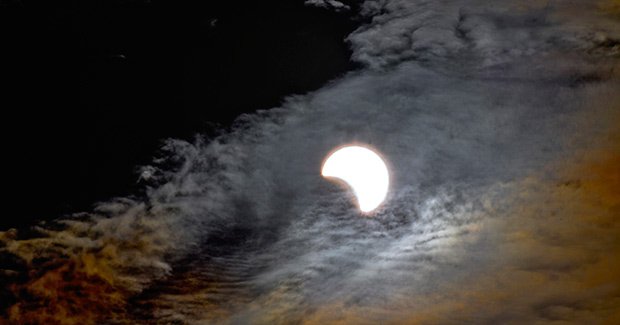Second solar eclipse in six months

TENNANT CREEK IS NORMALLY a colourful Northern Territory town, where travellers stop between bigger hubs along the Stuart Highway.
On 10 May, however, the small outpost had the best view in the country of our second solar eclipse in six months. Unlike November’s ‘total’ eclipse, this time only 97 per cent of the Sun’s rays were blocked-out by the coverage of the Moon.
The three per cent of sun not covered left a distinct ring around the Moon’s edge, earning this event the title of an ‘annular’ eclipse.
Eclipse: the first clue to Moon mountains
For astronomers and umbraphiles (eclipse chasers) this form lets them observe Baily’s Beads – dots of brighter light along the Moon’s glowing rim, where sunlight shines through the spaces between the moon’s mountains. These bright spots were the first clues as to the Moon’s rocky topography.
The partial eclipse topped off a year of solar events, begun by the rare Transit of Venus seen here in June last year. Australia will not see another Transit for 105 years, nor another total eclipse until 2028. Another partial eclipse will be visible in 2016.
At Tennant Creek, the eclipse began just before 7AM (ACST), but cloudy conditions made viewing difficult and few images of its full effect emerged. Maximum coverage lasted just four minutes before the Sun began to emerge from behind the Moon.
An extensive partial eclipse was seen from parts of Queensland, the Kimberley and the Northern Territory, while Australians in the south saw a sizable ‘bite’ taken out of the morning sun.
RELATED STORIES

